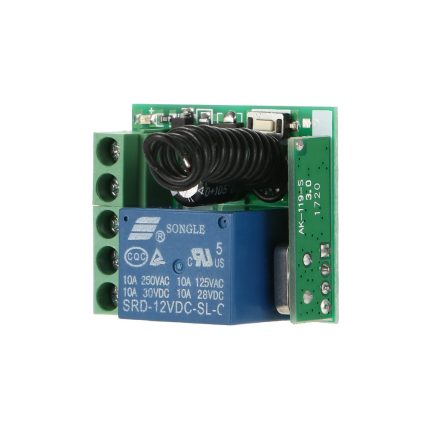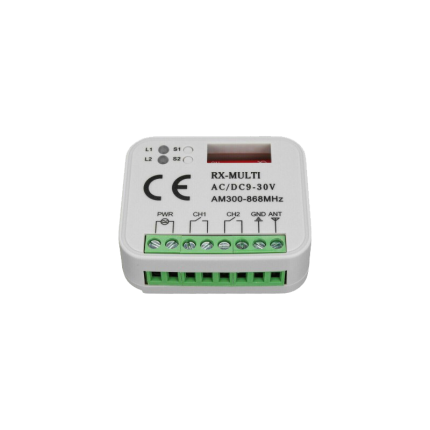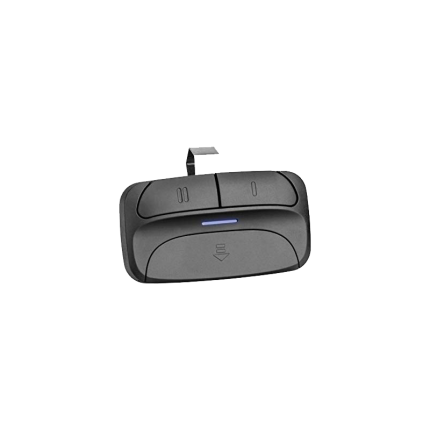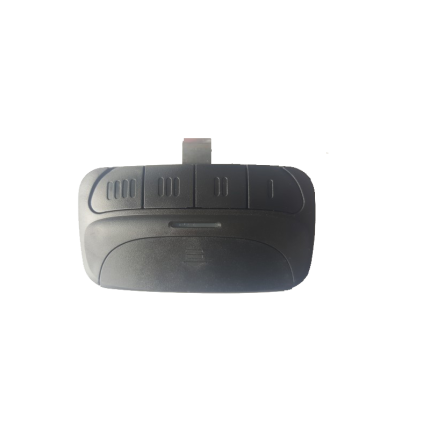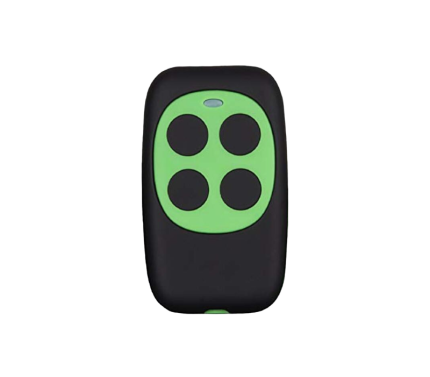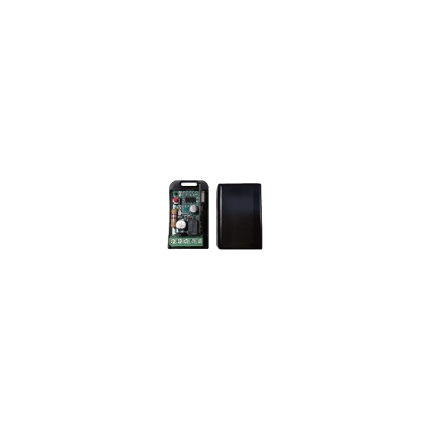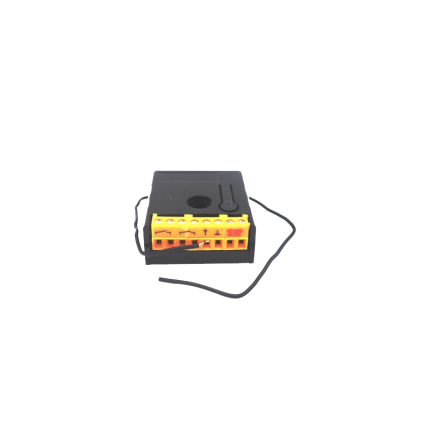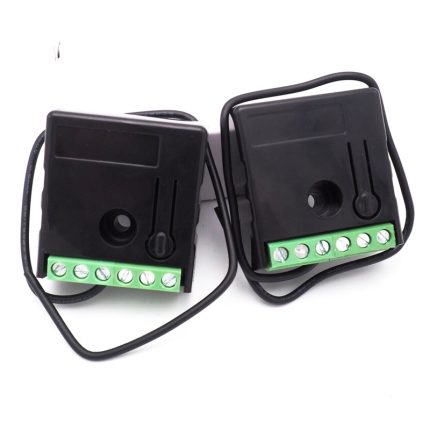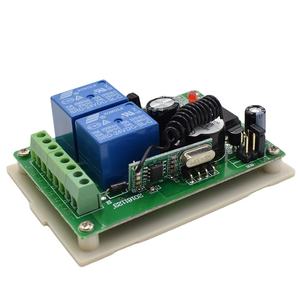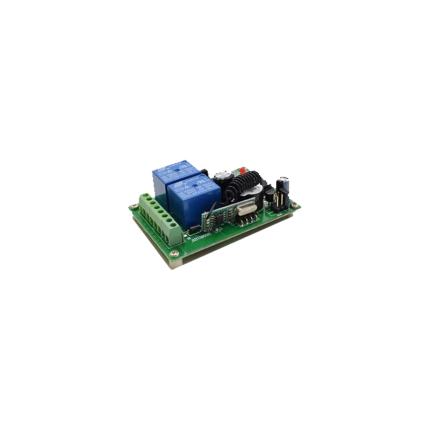Shop
Radio receiver RG315-12V1C
Ship or pick up from our office.
Radio receiver RG315-12V1C
* DC 12 V * 1 Channel * 315 MHz * Compatible with the Homelink system The RG315-12V1C is a radio receiver designed for automatic gate operators and garage doors. 🚧 It operates at a frequency of 315 MHz and is compatible with a wide range of gate operators, including Italian, Chinese, swing gate, sliding gate, and overhead garage door systems. Key Features- Operating Frequency: 315 MHz
- Voltage: 12V DC
- Compatibility: Works with various gate operators and garage doors.
- Capacity: Can store up to 100 remote controls.
- Signal Penetration: Its wireless RF signals can effectively pass through walls, floors, doors, and windows.
- Design: It's compact, lightweight, portable, and easy to install.
- Multiple Units: Multiple RG315-12V1C units can be used in the same location without interference.
- Gate Openers: Allowing remote control of swing gates and sliding gates.
- Garage Door Openers: Enabling wireless operation of overhead garage doors.
Radio receiver RX2CH-Multi Code
Ship or pick up from our office.
Radio receiver RX2CH-Multi Code
(Compatible with the wireless keypad control KW402 & KW125 *#8) *COMPATIBILITY LIST: NICE, FAAC, Liftmaster, Sommer, Ditec, V2, Marantec, etc... *AC/DC 12-24 V *2 Channels *AM/FM 300-869 MHz *Capacity: UnlimitedRadio receiver RQ2C433A – IT2
Ship or pick up from our office.
Radio receiver RQ2C433A -IT2
(Compatible with the wireless keypad control KW402 & KW125 *SW2) *AC/DC 12-24 V *Made in Italy *2 Channels *433.92 MHz *Capacity: 200 remote controlsGarage Door Opener Remote Control
Ship or pick up from our office.
Garage Door Opener Remote Control
A garage door opener remote control is a small, handheld device that uses radio frequency (RF) signals to wirelessly communicate with your garage door opener system. Essentially, it's a transmitter that sends a unique code to a receiver built into your garage door motor unit, telling it to open or close the garage door. Here's a breakdown of how it works and its key features: Functionality:- Signal Transmission: When you press a button on the remote, it sends a radio frequency signal containing a specific code.
- Signal Reception: The garage door opener has a receiver that constantly "listens" for these signals.
- Code Matching: If the received code matches the opener's stored code, the receiver activates the motor.
- Motor Activation: The motor then powers a drive mechanism (chain, belt, screw, or direct drive) that moves the garage door up or down.
- Radio Frequency (RF) Communication: Most remotes operate using RF signals (commonly 315 MHz or 390 MHz), allowing them to work from a distance and even through walls.
- Fixed Code Technology (Older): Early remotes used a fixed code that was sent every time. This was less secure as the signal could be easily intercepted and duplicated.
- Rolling Code Technology (Modern): To improve security, modern remotes use rolling code technology. The code changes every time you press the button, making it extremely difficult for unauthorized individuals to "grab" and reuse the code. Brands like LiftMaster (Security+ / Security+ 2.0) and Genie (Intellicode®) use their own versions of this.
- Dip Switches (Older): Some older remotes used physical dip switches that needed to be manually set to match the receiver's code.
- Wi-Fi and Smart Home Integration: Many newer garage door openers feature built-in Wi-Fi, allowing you to control your garage door from anywhere using a smartphone app (e.g., MyQ for LiftMaster/Chamberlain, Aladdin Connect for Genie). These apps often offer additional features like real-time notifications, scheduling, and access history.
- Multi-Button Remotes: Some remotes have multiple buttons, allowing you to control several garage doors or even other devices like lights.
- Universal Remotes: These are programmable remotes designed to be compatible with various brands and models of garage door openers, reducing the need for multiple remotes.
- Standard Remotes: Basic remotes with one or more buttons to operate the garage door.
- Visor Remotes: Larger remotes designed to clip onto your car's sun visor for easy access while driving.
- Keychain Remotes: Small, compact remotes that can be attached to your keyring for portability.
- Keypad Remotes: Mounted outside your garage door, these allow you to enter a numerical code to open the door, useful for keyless entry.
Gate Opener Remote Control
Ship or pick up from our office.
Gate Opener Remote Control
*With Visor Clip *433 MHz *4 ButtonsGate Opener Remote Control
Ship or pick up from our office.
Gate Opener Remote Control
– Copy Code typeGate opener remote controls use two main code types for copying: fixed code and rolling code.
Fixed code remotes are simpler and easier to clone, while rolling code remotes offer enhanced security and require more advanced techniques for copying.
Gate Opener Remote Control Fixed Code type:
- How it works: A fixed code remote transmits the same code every time it's pressed.
- Cloning: These are generally easier to clone using a universal remote duplicator.
- Security: Less secure than rolling code, as the code can be intercepted and copied.
- Example: Commonly found in older or simpler gate opener systems.
Radio receiver RQ1M433 – IT1
Ship or pick up from our office.
Radio receiver RQ1M433 – IT1
(Compatible with the wireless keypad control KW402 & KW125) *Made in Italy *AC/DC 12-24 V *1-CH *433.92 MHz *Capacity: 30 remotesRadio receiver RGRR2C
Ship or pick up from our office.
Radio receiver RGRR2C
*AC/DC 12-24 V *2-CH *433 MHz *Rolling codeRadio receiver RGRR1C
Ship or pick up from our office.
Radio receiver RGRR1C
*AC/DC 12-24 V *1-CH *433 MHz *Rolling codeRadio receiver RG315-24V2C
Ship or pick up from our office.
Radio receiver RG315-24V2C
*DC 24 V *2 Channels *315 MHz * Compatible with Homelink systemsRadio receiver RG315-24V1C
Ship or pick up from our office.
Radio receiver RG315-24V1C
*DC 24 V *1 Channel *315 MHz * Compatible with the Homelink system A gate opener radio receiver is an electronic device that acts as the "ear" for an automatic gate system. Its primary function is to receive radio signals from a remote control (transmitter) and, upon recognizing a valid signal, instruct the gate opener's control board to activate the gate motor to open or close the gate. How it Works Here's a breakdown of how a gate opener radio receiver typically operates:- Signal Reception: When you press a button on your remote control, it sends out a radio signal at a specific frequency (e.g., 300MHz, 310MHz, 318MHz, 433MHz).
- Compatibility: The receiver is tuned to the same frequency as the remote control. For the system to work, the receiver and remote must also be compatible in terms of brand and radio protocol (e.g., rolling code, fixed code).
- Decoding: The receiver decodes the radio signal it receives. Modern systems often use "rolling code" technology for enhanced security, where the code changes with each use, making it very difficult for unauthorized individuals to duplicate or intercept.
- Command Relay: Once the signal is decoded and validated, the receiver relays the command to the gate opener's main control board.
- Gate Activation: The control board then triggers the gate motor, causing the gate to open or close.
- Internal vs. External: Some gate openers have built-in receivers, while others utilize external receivers that connect to the system. External receivers can be used as replacements if an internal one fails or to add functionality.
- Channels: Receivers can be single-channel (controlling one gate) or multi-channel (controlling multiple gates or other devices).
- Frequency: Receivers operate on specific radio frequencies, and it's crucial that the remote control matches the receiver's frequency.
- Security: Newer receivers often incorporate advanced security features like rolling codes or encrypted protocols to prevent unauthorized access.
- Range: The effective range of a receiver varies, typically from 50 to 100 feet, but some long-range receivers can extend this distance.
- Power Input: Receivers can operate on various voltages, such as 12V DC, 24V DC, or even 110V AC, depending on the gate opener system.
- Compatibility: While some receivers are universal, many are designed to work with specific brands or types of remote controls.
- Convenience: It allows users to open and close gates remotely, eliminating the need to manually operate them.
- Security: With coded and encrypted signals, it ensures that only authorized individuals can access the property.
- Flexibility: Many receivers can be programmed to work with multiple remote controls, accommodating various users.

